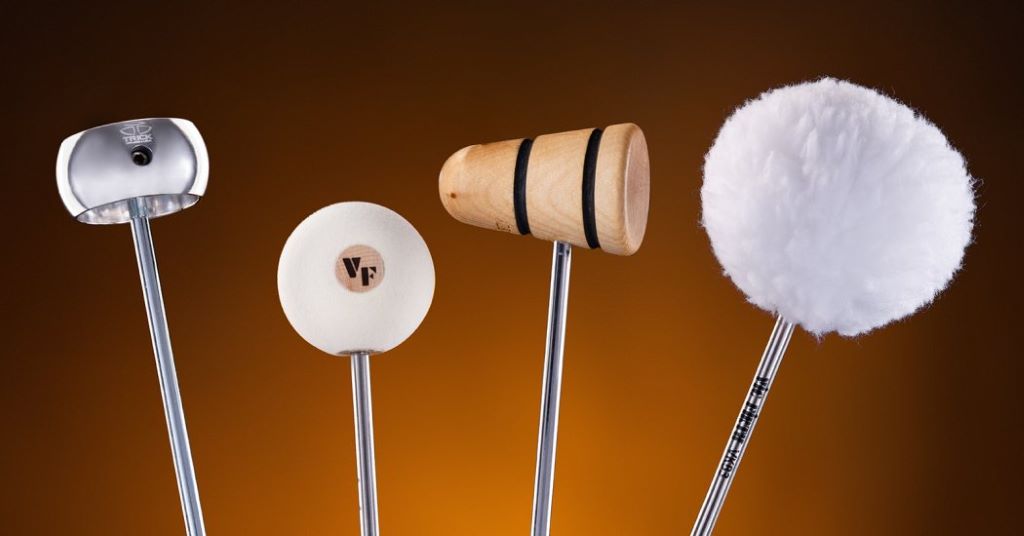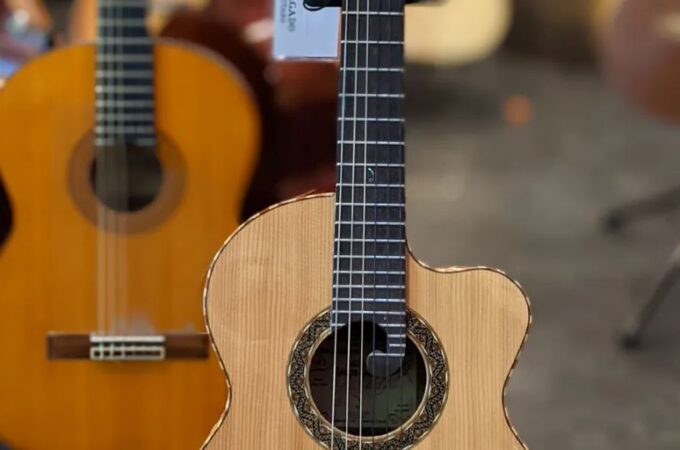
Understanding Bass Drum Mallets: The Heartbeat of Percussion
The bass drum, with its deep, resonant voice, sets the sonic foundation for a wide range of musical styles. Behind the powerful sound of the bass drum lies a deceptively simple tool – the mallet. Bass drum mallets, although seemingly straightforward, come in a dazzling array of varieties, each subtly influencing the tone and character of your drum.
In this article, we’ll delve into the world of bass drum mallets, uncovering the critical considerations for choosing the perfect mallet, as well as exploring tips for effective playing techniques.
Table of Contents
ToggleAnatomy of a Bass Drum Mallet
Let’s break down the key components of a typical bass drum mallet:
- Head: The heart of the mallet, the head determines the sound you’ll get. Materials range from soft felt for warmth and depth to hard wood for punch and articulation. Head sizes also vary, impacting attack and overall volume.
- Shaft: Typically made of wood (like hickory or rattan) or durable materials like carbon fiber, the shaft’s length and thickness affect balance and weight in your hand.
- Grip: Some mallets have a simple shaft, while others feature leather, rubber, or felt grips for comfort and control.

Types of Bass Drum Mallets
Bass Drum mallets fall into two broad categories, each with its own advantages:
- Concert Bass Drum Mallets: Designed for orchestras, concert bands, and other settings where rich tonal nuances are essential.
- Feature large, soft felt heads
- Excel at drawing out warm, booming sounds
- Often have telescoping shafts for adjustable length
- Marching Bass Drum Mallets: These mallets prioritize volume, projection, and durability for outdoor use.
- Varying head materials, from felt to hard plastic and wood
- Designed for power and articulation
- Sizes are often numbered, with larger numbers indicating bigger heads and louder sound
Choosing the Right Bass Drum Mallet
With so many choices, selecting the right mallet can seem daunting. Here’s how to narrow it down:
- Musical Context: Concert settings demand warmer tones (felt heads), while marching bands require volume and definition (harder heads).
- Drum Size: Larger bass drums generally call for larger mallets for optimal sound production.
- Desired Sound: Are you aiming for a deep, thunderous boom or a sharper, more articulate attack? Your desired sonic character influences your head material choice.
- Personal Preference: Feel and balance matter! Experiment with different mallets to find what feels comfortable in your hands.
Playing Techniques with Bass Drum Mallets
How you wield the mallet directly shapes the sound of your bass drum. Here are some basic techniques:
- Single Strokes: The most common, simply strike the drumhead in a controlled motion. Vary the force and follow-through for different volume and tonal effects.
- Rolls: Rapid, repeated strokes creating a sustained rumble. Mastering consistent roll technique is essential for smooth, even sound.
- Articulation: Use the mallet’s weight and rebound to control note length. Short, punchy notes or long, legato ones – the choice is yours based on the music.
- Dynamics: Range matters! Practice controlling volume from the softest whispers to booming strikes that fill the space.
Caring for Your Mallets
To ensure your mallets last a long time:
- Storage: Invest in a mallet bag to prevent damage when not in use.
- Cleaning: Gently wipe down felt heads regularly to remove dust and residue.
- Shaft care: Avoid storing mallets in overly humid or dry environments to prevent warping.
Beyond the Basics
The world of bass drum mallets offers further customization:
- Multi-Purpose Mallets: These feature different heads on each end, offering versatility for quick sonic shifts.
- Specialty Mallets: From extra-large gong mallets to small, hard timpani mallets used on bass drums – the options are vast.
Conclusion
Bass drum mallets, while seemingly simple, are a gateway to unlocking the full potential of your instrument. By understanding the nuances of mallets, choosing wisely, and developing your technique, you’ll transform the heartbeat of your music with power and precision.





